Damascus is said to be the oldest continuously inhabited city in the world (along with a few others) and Syria being one of the ancient crossroads between East and West has many claims on significant event in history. Hence, there is a lot of history to see.
One might imagine that the Damascus National Museum would be a good place to start but when we visited about half of it was closed for refurbishment and as is common to most museums in Syria, you are not allowed to take any photographs inside (no one, not even the guides could think of any logical reason) – hence we cannot show you very much.
Proving that you cannot do much when thinking of a new design for a bath, we have this Roman Bath which is identical in design to that in our house in England.
Dumped in the museum gardens were two very nice sections of Roman Mosaic
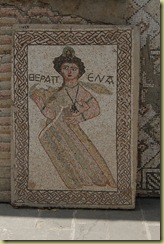 | 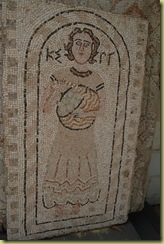 |
and rather a nice fish
and then two Animals for Sam – do you know what they are?
The most important work inside was a clay tablet with 30 cuneiform characters on it dating from around 1400 BC. These are said to be the origins of around 10 different alphabets including that used in this blog. We cannot of course show you this tablet so if you want to see it click here and scroll down until you find the image on the right hand side.
However, the above chart does show how 15 other alphabets are related to the original Ugarit alphabet shown on the clay tablet.
Damascus is full of small workshops and shops, here we have a glassblower showing how easy (!) is is to blow a glass vase
and here is a Jacquard loom (invented in 1801) still in use making fine silks. Computer historians will remember that it is one of the first examples of a programmable machine, the pattern being controlled by the “punched wooden cards”. Its invention enables semi-skilled workers to produce patterns designed by others. To change the pattern, you change the card.
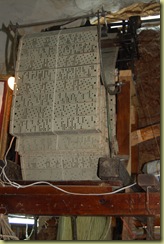 | 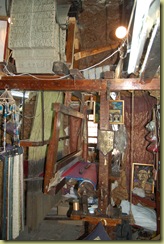 |
The old town (a Unesco World Heritage Site) lives up to its name and is an amazing place full of
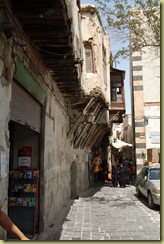 | 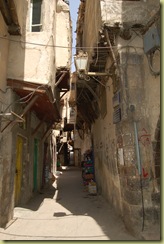 |
alleyways with buildings designed to overhang every space
and shops or cafes tucked into every corner.
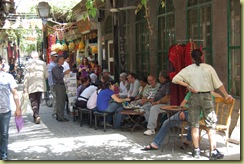
There are numerous street side cafes selling food and drink, lunch cost around £2.
The Souk in the old city is an absolutely amazing assault on the senses. It is full of thousands of small shops selling everything you could and might not want. There are clothes shops
Shops selling head scarves
mix it yourself perfumes
places to buy Olive Oil soap
Herbs and spices galore
Sweets probably laden with e-factors
and when you get tired, you can have a drink from a Tamarind (aka Indian Date) drink seller who fills your cup with great performance

and Damascus’s most popular ice cream house
which of course we had to try
The Souk is also the start of “Straight Street” which is mentioned in the Bible as having been travelled by St Paul and he stayed in a house on it. The section we walked was in the Souk.
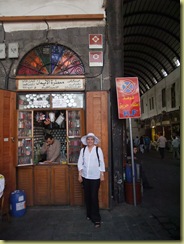 | 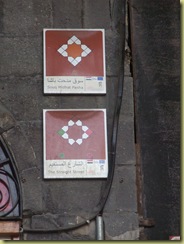 |
It is quite strange to be there and to think “St Paul Walked here” (although he would not have seen the Souk).
One of the “must see” sights is the Umayyad Mosque built from 705AD. But before you can go in, you have to be appropriately dressed.
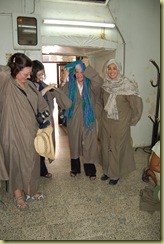 |  |
and so Pat (as a woman) had to cover herself with an all encasing robe and I (as a man wearing shorts) was asked to wear a voluminous lower tunic style skirt.
The mosque is the burial place of Saladin (famous for his battles with Richard)
and is a quite amazing place, both in terms of its scale and its artistry.
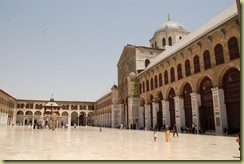
The Alms House where donations are stored.
A decorated ceiling
Inside the mosque, where unusually (for us at any rate) there is a shrine which houses the “head of John the Baptist”. Whilst here we have been told a lot about the various branches of Islam, their particular beliefs, how the religion works on a day-to-day basis etc. I think it would be true to say that we still find it somewhat confusing.
Wealth and style are usually shown on the inside rather than the outside in Damascus and this restaurant (where we ate one night) is housed behind the most innocuous of doors down a side alley.
The World Cup is of course followed here with as much interest as at home and wherever you go, televisions are tuned in to the games. All around the walls of this restaurant were large screens showing Germany playing New Zealand. In general the Syrians were supporting Germany (who won 4-0) much to the quiet but resigned dismay of two New Zealanders in our group.
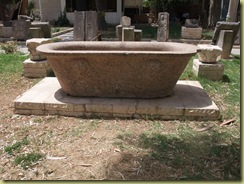
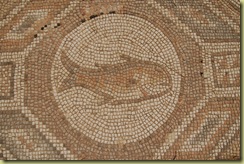
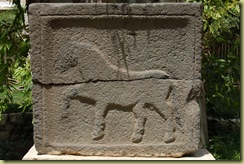
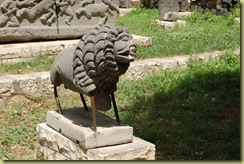
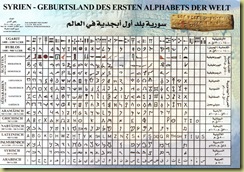
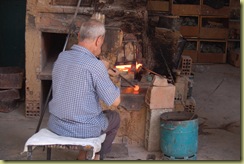
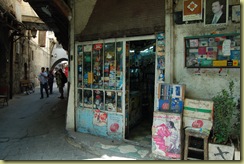
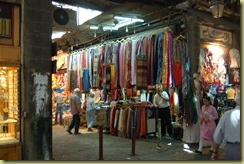
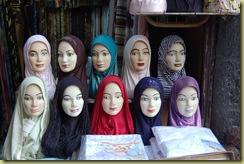
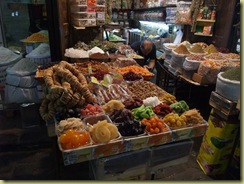

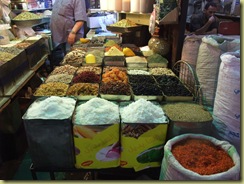

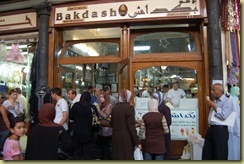
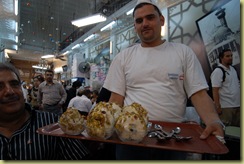
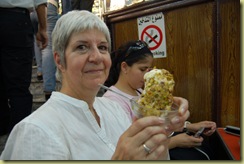
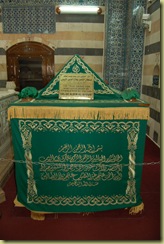

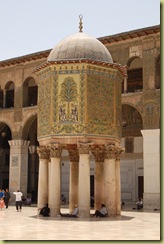
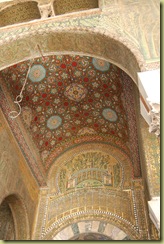
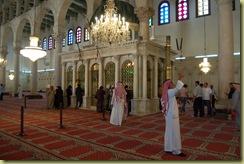
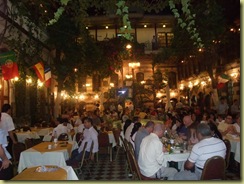
No comments:
Post a Comment